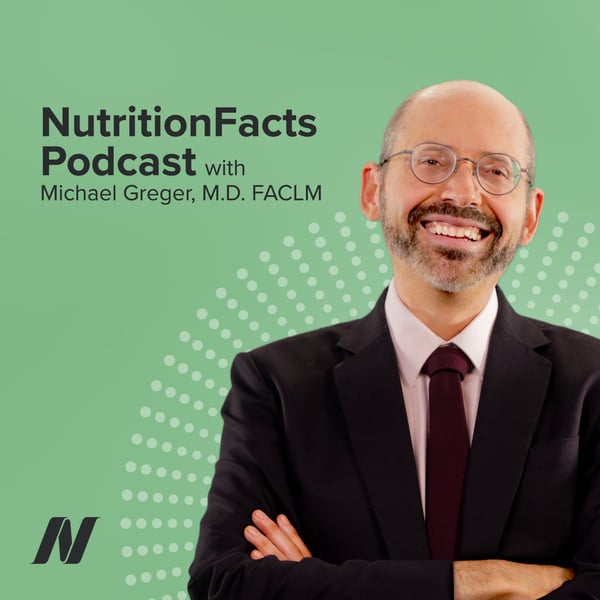How to Die a Good Death
Nutrition Facts with Dr. Greger
[email protected]
4.8 • 3.6K Ratings
🗓️ 18 April 2024
⏱️ 13 minutes
🧾️ Download transcript
Summary
* https://nutritionfacts.org/video/how-to-die-a-good-death/
* https://nutritionfacts.org/video/vsed-the-benefits-of-fasting-for-ending-life/
Visit the video pages for all sources and doctor's notes related to this podcast.
Transcript
Click on a timestamp to play from that location
| 0:00.0 | I hear from lots of people every day who are concerned about how their diet is affecting their health. |
| 0:07.0 | They need answers based on facts, in other words, from the peer-reviewed medical literature, and that is what I'm here for. |
| 0:15.4 | Welcome to the Nutrition Facts Podcast. |
| 0:18.6 | I'm your host Dr. Michael Greger. |
| 0:21.4 | Today we explore the possibilities of how we might have control over our own |
| 0:27.0 | death, retaining dignity, privacy, pain relief, and we start with a close look at hospice. |
| 0:34.9 | We have all sorts of detailed stats about dying, but little about the experience of death. |
| 0:41.5 | For the minority who die under the care of palliative care teams, one's death could probably |
| 0:46.8 | be described as good, but there's a suspicion that for the majority who die in hospitals |
| 0:52.0 | or nursing homes, |
| 0:53.1 | the experience is bad. |
| 0:55.6 | And that's where most people die. |
| 0:57.8 | In spite of widespread preference to die at home |
| 1:01.6 | in almost all populations, most deaths occur in institutions. |
| 1:06.0 | And this doesn't just have consequences for the patient, but for the bereaved caregivers as well. |
| 1:13.9 | Patients with cancer who died in an intensive care unit or hospital |
| 1:17.7 | experience more physical and emotional distress |
| 1:20.1 | and worse quality of life at the end of life and their caregivers suffer five times the odds of |
| 1:27.0 | post-traumatic stress disorder and nearly nine times the odds of |
| 1:30.6 | severe prolonged disabling grief. |
| 1:33.7 | When researchers have looked into the care of dying patients in hospitals, |
| 1:37.4 | it hasn't been pretty. |
... |
Please login to see the full transcript.
Disclaimer: The podcast and artwork embedded on this page are from [email protected], and are the property of its owner and not affiliated with or endorsed by Tapesearch.
Generated transcripts are the property of [email protected] and are distributed freely under the Fair Use doctrine. Transcripts generated by Tapesearch are not guaranteed to be accurate.
Copyright © Tapesearch 2025.

